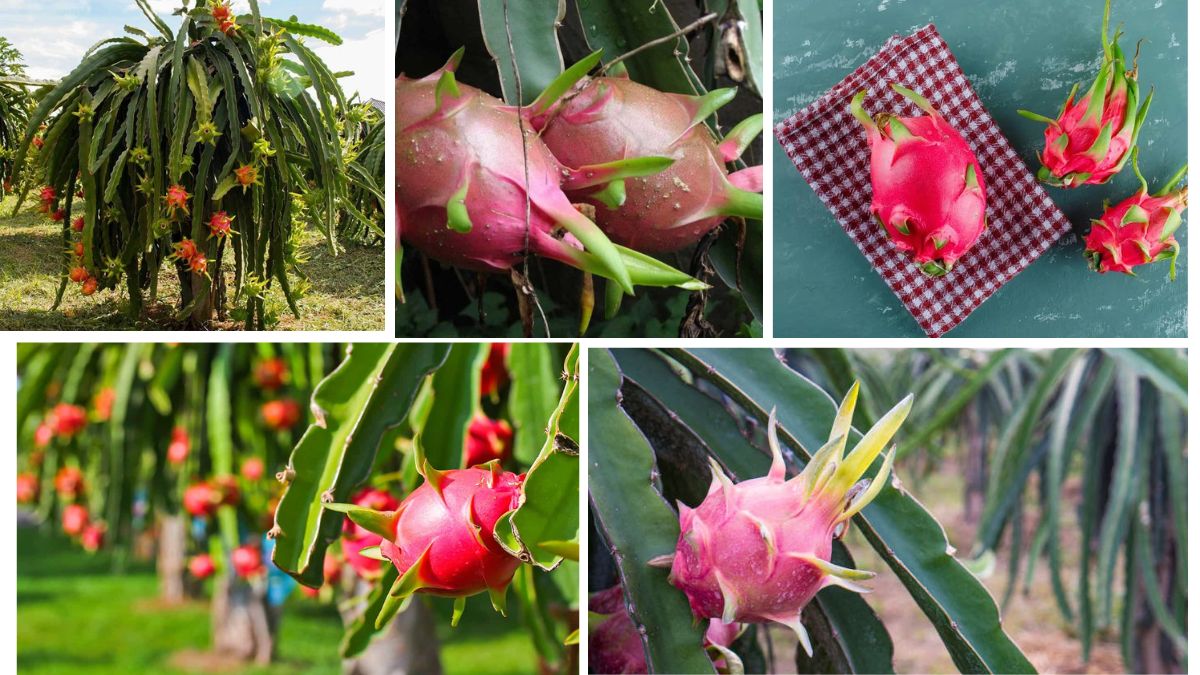Dragon fruit, also known as pitaya, is a tropical fruit that not only looks exotic but also offers numerous health benefits. With its bright pink or yellow skin, speckled flesh, and cactus-like appearance, it’s a showstopper in any garden. The best part? You don’t have to be a gardening expert to grow it! This step-by-step guide is tailored for beginners who want to grow dragon fruit plants at home successfully.
Introduction to Dragon Fruit
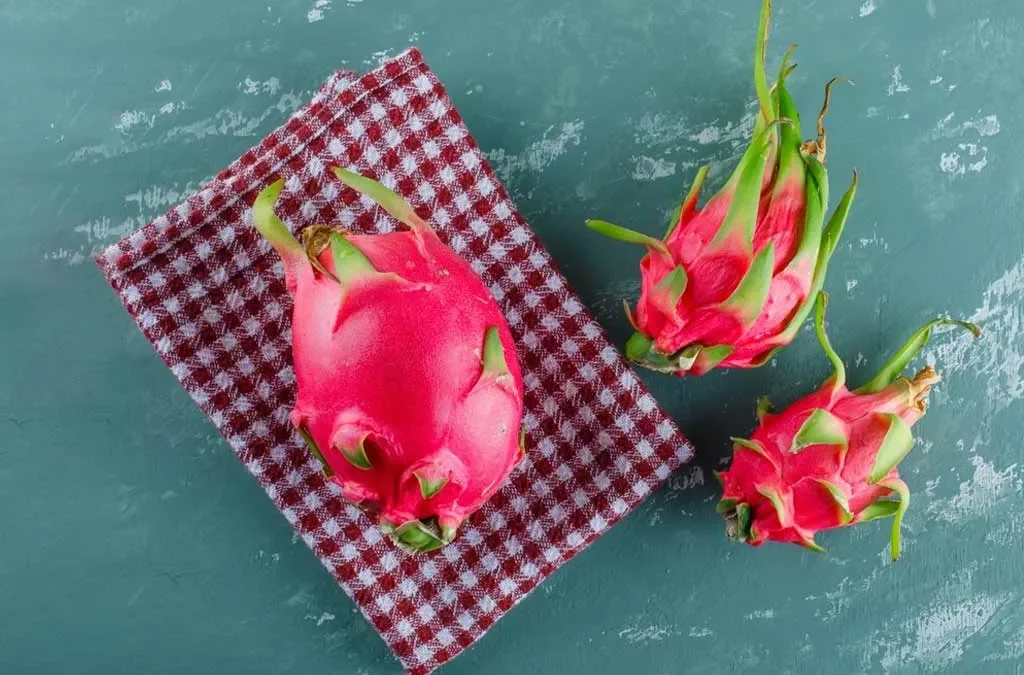
Dragon fruit comes from the Hylocereus cactus species and is native to Central America, though it is now grown in many tropical and subtropical regions around the world, including Vietnam, Thailand, and India. There are three common varieties:
- White flesh with pink skin (Hylocereus undatus)
- Red flesh with pink skin (Hylocereus costaricensis)
- White flesh with yellow skin (Selenicereus megalanthus)
Dragon fruit is rich in antioxidants, vitamin C, fiber, and magnesium, making it both a beautiful and beneficial addition to your garden or balcony.
Step 1: Selecting the Right Variety
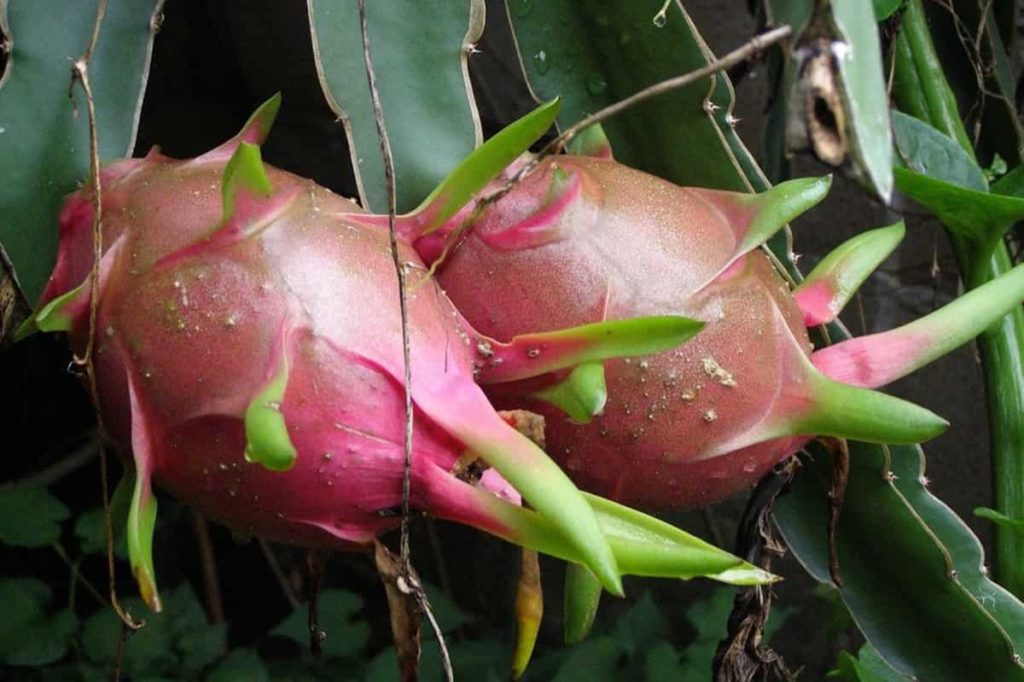
Choose a variety based on your climate, taste preference, and space. If you live in a tropical or semi-tropical area, any variety will do. Those in cooler zones should opt for container planting, so you can move the plant indoors during frost.
- Tip: Red-fleshed varieties tend to be sweeter, while white-fleshed ones are more common and hardy.
Step 2: Choosing the Growing Method
You can grow dragon fruit from:
- Seeds – Takes longer (up to 6 years to fruit)
- Cuttings – Much faster (fruits in 1–2 years)
Recommended for beginners: Cuttings
They root quickly and have a higher success rate.
Step 3: Preparing the Cuttings
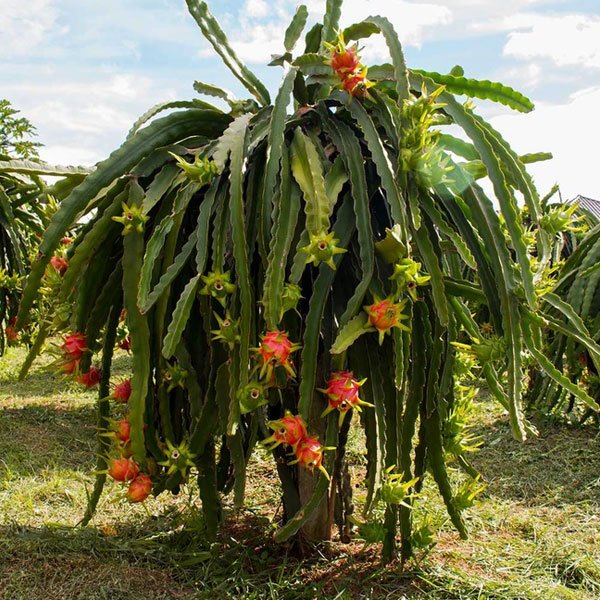
If using cuttings:
- Select a healthy segment (about 12–18 inches long)
- Let it dry in a shaded area for 5–7 days until the cut end scabs over
- This prevents rotting when planted
Step 4: Soil Preparation
Dragon fruit thrives in well-draining soil. A mix of:
- 1 part garden soil
- 1 part compost
- 1 part sand or perlite
…works great.
Soil pH: Slightly acidic to neutral (6.0–7.0)
- Tip: Avoid clayey or waterlogged soil. If your soil retains water, plant in raised beds or containers.
Step 5: Selecting a Suitable Location
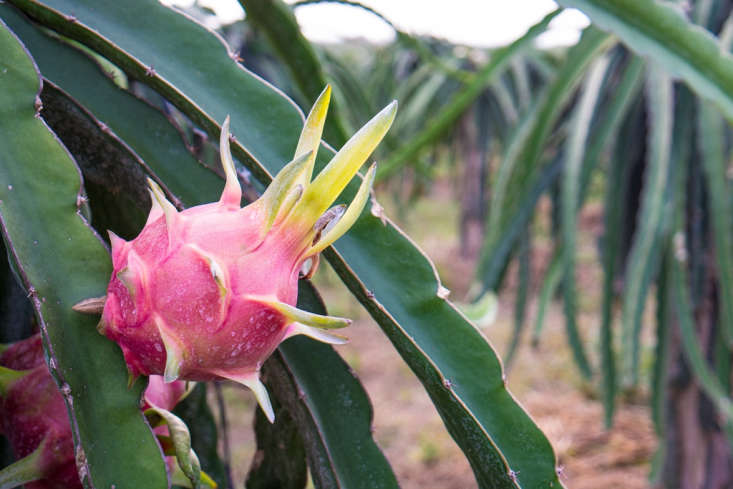
Dragon fruit loves full sunlight – at least 6–8 hours per day. Choose a spot that gets:
- Ample sunlight
- Good air circulation
- Protection from strong winds
If growing indoors or on a balcony, place near a south-facing window.
Step 6: Planting the Dragon Fruit
For Ground Planting:
- Dig a hole twice the size of the cutting base
- Insert the cutting 2–3 inches deep
- Gently pack the soil around it
- Water lightly
For Pot Planting:
- Use a 10–15 gallon container with drainage holes
- Add a stake or trellis for support
- Fill with cactus mix or the DIY soil blend
- Insert the cutting and water
Step 7: Watering Schedule

Dragon fruit is a cactus but still needs regular watering.
- Initial phase: Water every 2–3 days until established
- After rooting: Once a week or when the top 2 inches of soil are dry
- Avoid overwatering: Leads to root rot
- Tip: Water less in winter when growth slows.
Step 8: Providing Support
Dragon fruit plants are climbers. Use a trellis, wooden post, or tomato cage to help the plant grow upward. Once it reaches the top, it will branch out and form a canopy, which is where the flowers and fruits develop.
- Secure the plant with ties as it grows
- Prune to control shape and remove dead branches
Step 9: Fertilization
Feed your dragon fruit for strong growth and early fruiting.
- Use: Balanced fertilizer (10-10-10) every 1–2 months during growing season
- Switch to: High-phosphorus (5-10-10) fertilizer during flowering
- Add organic compost or manure once every 3 months
Avoid over-fertilizing, especially nitrogen-rich formulas, as they promote leaves over fruits.
Step 10: Flowering and Pollination
Dragon fruit plants usually flower in summer. The flowers are:
- Large, white, and fragrant
- Bloom at night and wilt by morning
Some varieties are self-pollinating, others need cross-pollination. If you only have one plant and it’s not self-pollinating:
- Use a soft brush to transfer pollen between flowers manually at night
- Or plant a second variety for cross-pollination
Step 11: Harvesting Dragon Fruit
Fruits are ready to harvest 30–50 days after flowering.
Signs of ripeness:
- Bright skin color (pink or yellow)
- Slight softness when touched
- Small wings on skin begin to wither
To harvest:
Twist the fruit gently or cut it off with garden scissors.
Common Problems and How to Fix Them
| Problem | Cause | Solution |
|---|---|---|
| Yellowing | Overwatering | Let soil dry completely |
| Root Rot | Poor drainage | Replant in raised bed or container |
| No Flowers | Lack of sunlight or nutrients | Move to sunnier spot and fertilize |
| Pests (aphids, mealybugs) | Insects | Neem oil spray or insecticidal soap |
Bonus Tips for Beginners
- Mulch around the base to retain moisture
- Winter care: Move pots indoors or protect with frost cloth
- Don’t over-prune: Only remove dead or crossing branches
- Label your plant if growing multiple varieties
Conclusion
Growing dragon fruit at home is a rewarding experience that combines aesthetics, sustainability, and nutrition. With just a bit of effort and the right setup, even beginners can enjoy beautiful blooms and exotic fruit in their backyard or balcony.
So roll up your sleeves, plant your cutting, and in a short time, you’ll be harvesting your very own dragon fruit!
